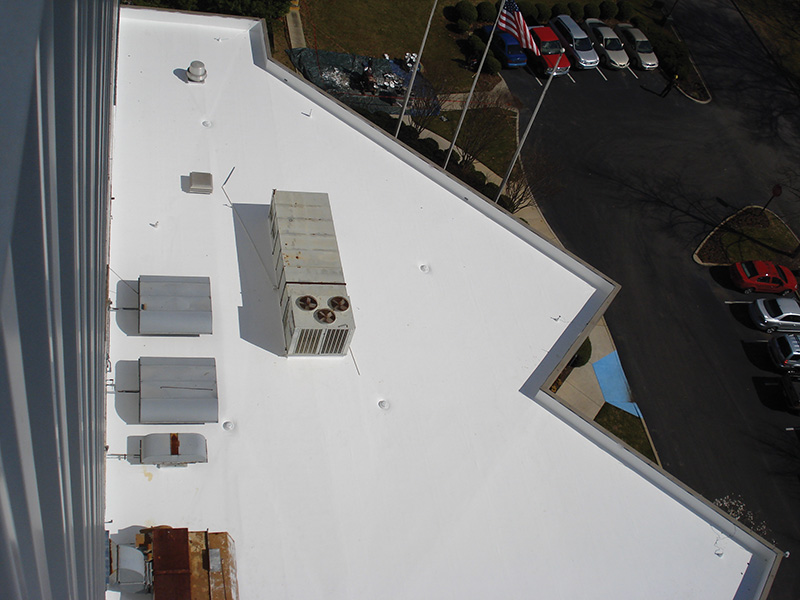Keep your roof leak-free on a budget.
By Anthony Vross
When you break down what you really want to get out of your roof, it’s basically as simple as (1) avoiding leaks, and (2) minimizing costs to maintain it.
You want predictable performance and budget certainty. You want to prevent surprises, which in “roof language” typically equates to huge capital outlays that you weren’t planning for. In other words, you don’t want to have to reallocate capital resources that could be better spent on inventory and growing your business.
A roof represents roughly 10% of the initial construction cost of the building, but can account for as much as 90% of the building’s repair costs over its lifetime — although it doesn’t have to.
Managing your roof assets on a budget doesn’t mean neglecting repairs “until it gets really bad.” It’s quite the opposite, actually. It means being disciplined with maintenance and taking care of the small things in a timely manner before they become major, budget-stretching events.
Taking a few well-organized, proactive steps in the maintenance of your roof can dramatically reduce the amount of money you spend on it, and can help you prevent a premature, costly roof replacement.
1. Understand what causes leaks and work to prevent them.
The source of water intrusion can be either direct (a hole or crack in the roof itself) or indirect (penetration coming from mechanical units, doors/windows or walls). So the first thing to understand is not all leaks mean you have an issue with the roof itself.
 Human error is the chief cause of roof leaks, and many of your ongoing roof maintenance needs could be triggered the day the roof is installed, due to poor workmanship. Foot traffic from individuals accessing your roof for maintenance and inspection of the roof itself or other roof-mounted equipment furthers the chances for problems.
Human error is the chief cause of roof leaks, and many of your ongoing roof maintenance needs could be triggered the day the roof is installed, due to poor workmanship. Foot traffic from individuals accessing your roof for maintenance and inspection of the roof itself or other roof-mounted equipment furthers the chances for problems.
The sun is next. Consistent exposure to heat and UV rays will eventually wear down a roof. Water ranks third. Ponding, heavy rain or snow can ultimately cause problems that lead to leaks.
Preventive maintenance performed at least twice annually by a trained, experienced roofing technician, using the appropriate materials for your climate and roofing system, and minimizing foot traffic on the roof will all help prevent many leak-related problems before they have a chance to fester.
2. A roof repair is just the beginning. Understand consequential damage.
The damage a roof leak can cause inside a facility can be devastating to a retail business’ bottom line. For starters, wet insulation may soon turn to mold growth problems and potential insect infestation. It may also damage inventory, create a slip-and-fall hazard for employees and customers, and accelerate the remaining useful life of the roof.
Don’t let even a minor roof leak go unrepaired. Address the need immediately. And while the technician is on the roof fixing the obvious leak, have him address any other problem areas that are clearly apparent. Maximizing the repair technician’s time while he’s on-site will save you the time and expense of a follow-up service call.
3. Don’t rely solely on your warranty to save you money.
Warranties can easily be voided when the prescribed care and maintenance instructions are not followed and documented, a matter some scrupulous roofing contractors count on to be the case.
Too many buyers of roofing systems fail to look beyond the surface at what the warranty’s coverage terms are. They fail to realize the longer the warranty term, the greater likelihood of loopholes. Relying on a warranty to cover the expense of a roof leak repair is optimistic at best.
Let your warranty serve as peace of mind against a catastrophic issue that happens to your roof within its first couple of years. But don’t let it keep you from properly — and proactively — managing your roofing assets by addressing day-to-day minor repairs and performing regular maintenance.
4. Don’t replace your roof too soon.
Properly maintained, the right roofing system for your building application can last 25 years or more. And the availability of improved materials means a roof can usually be restored, or rebuilt, time and time again without having to do a complete tear-off and replacement. A restored roof may even come with renewed warranty terms.
Don’t jump to thinking a leak, or even a series of leaks, means you need a new roof. Always exhaust every option before replacing your roof. Chances are likely that a less expensive option is available. Replacing a roof that still has useful life remaining is like leaving money on the table. Making a timely intervention with quality materials from a quality contractor can optimize and extend a roof’s useful life, saving you 40% to 50% of the cost of replacement.
Conclusion
Establish a relationship with a quality roofing contractor — one who’s been around a while and has the resources and responsiveness you will need when you’re in a pinch.
The right contractor will help you establish a roof maintenance program that’s suitable for your climate, your roof system and your budget. Spend wisely with preventive maintenance and quality materials, and you’ll be rewarded with budget certainty that enables you to protect your inventory, keep your employees and customers safe, and re-invest in your business.
— Anthony Vross is a co-owner of Simon Roofing, a national roofing contractor and manufacturer that was recently named among the 10 largest roofing contractors in the United States.
